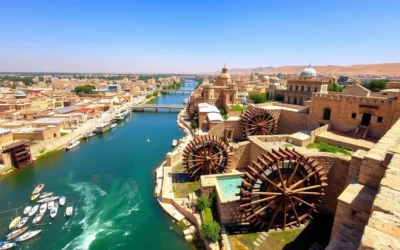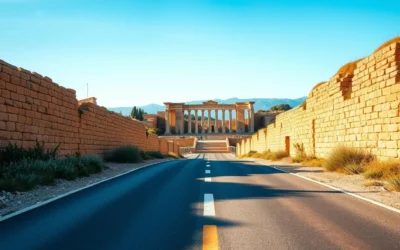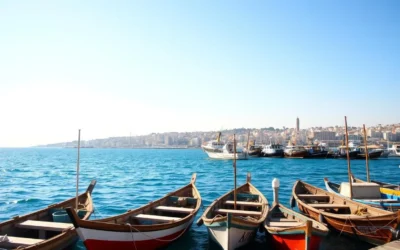Once known as the “Venice of the Sands,” Palmyra was home to over one million date palms and stood as a crucial crossroads of ancient civilizations. This UNESCO World Heritage site in the Syrian desert was where East met West along the Silk Road, creating a unique cultural blend that can still be witnessed in its magnificent ruins today. Despite recent challenges, Palmyra remains one of history’s most fascinating archaeological treasures.
Getting There & Planning Your Journey
Visiting Palmyra requires careful planning. Due to the region’s complexity, travelers must organize their journey through a licensed travel agency. Most tours to Palmyra operate as day trips from larger cities like Damascus or Homs, which are approximately 215 km and 150 km away respectively.
Important travel considerations include:
- Special permits are required to access Palmyra, which your tour operator will arrange
- Multiple security checkpoints exist on roads to the site
- Travel insurance options are limited for Syria – research thoroughly before departure
- Most visitors base themselves in Homs and take a morning half-day trip to Palmyra
Ready to Begin Your Palmyra Adventure?
Start by finding the best flight options to Damascus or Beirut (for overland entry to Syria)
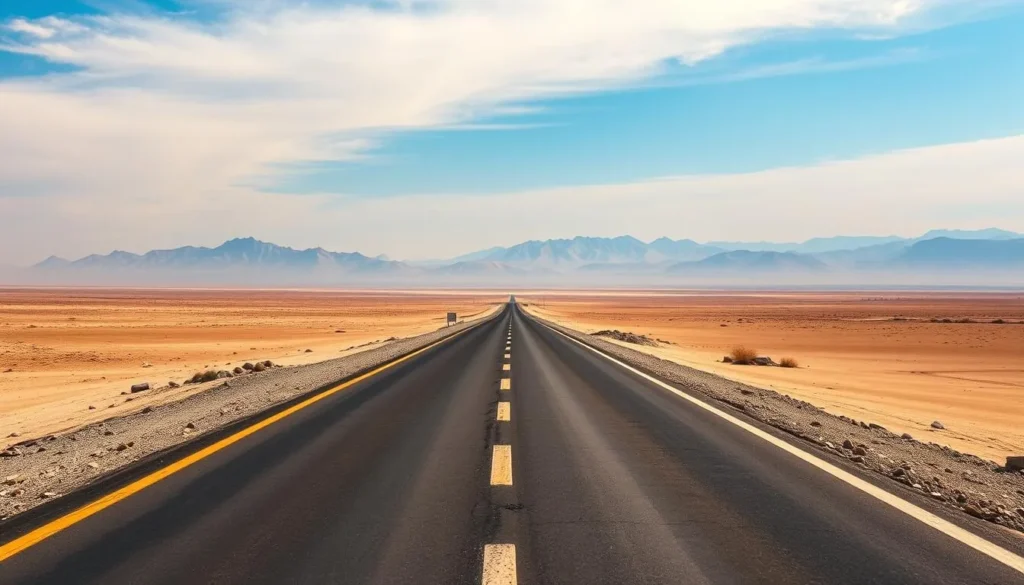
Best Time to Visit Palmyra
Timing your visit to Palmyra is crucial for comfort and enjoyment. The desert climate brings extreme temperature variations throughout the year.
| Season | Months | Temperature | Recommendation |
| Spring | March-May | 18-30°C (64-86°F) | Highly Recommended |
| Summer | June-August | 35-45°C (95-113°F) | Not Recommended |
| Fall | September-November | 20-32°C (68-90°F) | Recommended |
| Winter | December-February | 5-15°C (41-59°F) | Good, but cooler |
Most travel agencies schedule early morning visits during summer months to avoid the intense midday heat. Spring (March-May) and fall (September-November) offer the most pleasant conditions for exploring the extensive ruins comfortably.
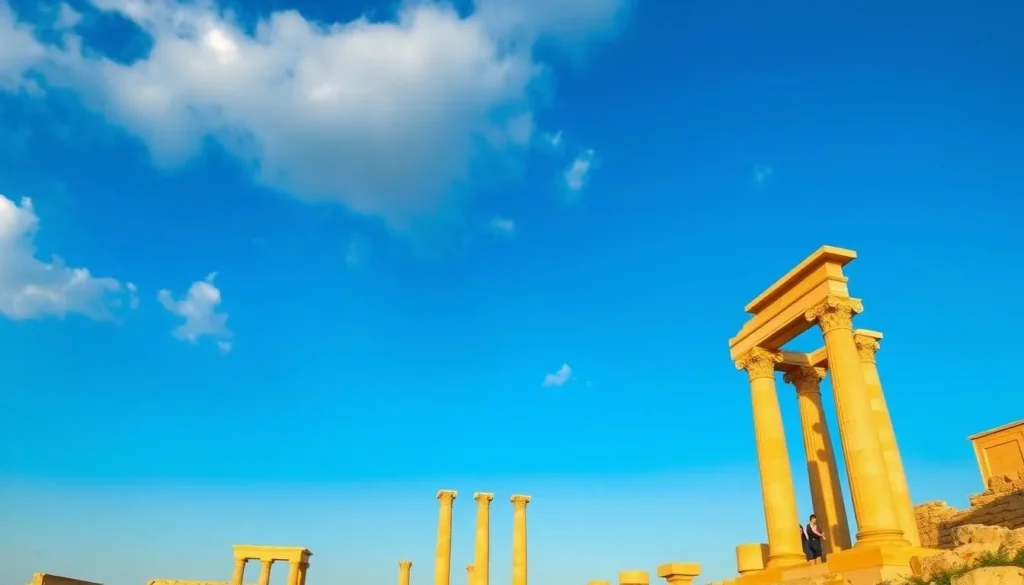
Getting Around Locally
The archaeological site of Palmyra is extensive, covering several square kilometers. While walking is the traditional and most rewarding way to explore the ruins, there are several options for getting around:
On Foot
Walking allows you to fully appreciate the scale and details of the site. The main attractions are connected by paths, though distances between some points can be considerable. Wear comfortable shoes, bring water, and consider visiting during cooler hours.
Guided Tours
Licensed guides provide historical context and ensure you don’t miss important features. They can also help navigate the site efficiently. Most organized trips to Palmyra include guide services as part of the package.
Before the conflict, camel rides were available around the site, offering a traditional way to experience the desert landscape. However, availability of such services may vary now, so check with your tour operator for current options.
Where to Stay
Accommodation options in Palmyra itself are currently limited due to the conflict. Most visitors stay in nearby cities and visit Palmyra as a day trip. Here are the recommended options:
Homs
The closest major city to Palmyra (about 150 km away), Homs offers several hotel options and serves as the base for most day trips to the ancient site. Look for accommodations in the city center for convenience.
Damascus
Syria’s capital provides the widest range of accommodation options, from budget guesthouses to boutique hotels in restored traditional houses. The Old City area offers atmospheric stays in historic buildings.
Boutique Options
For a more authentic experience, consider staying in a traditional Damascene house converted into a boutique hotel. These often feature central courtyards with fountains and traditional architecture.
Find Your Perfect Stay
Browse accommodation options in Damascus and Homs for your Palmyra adventure
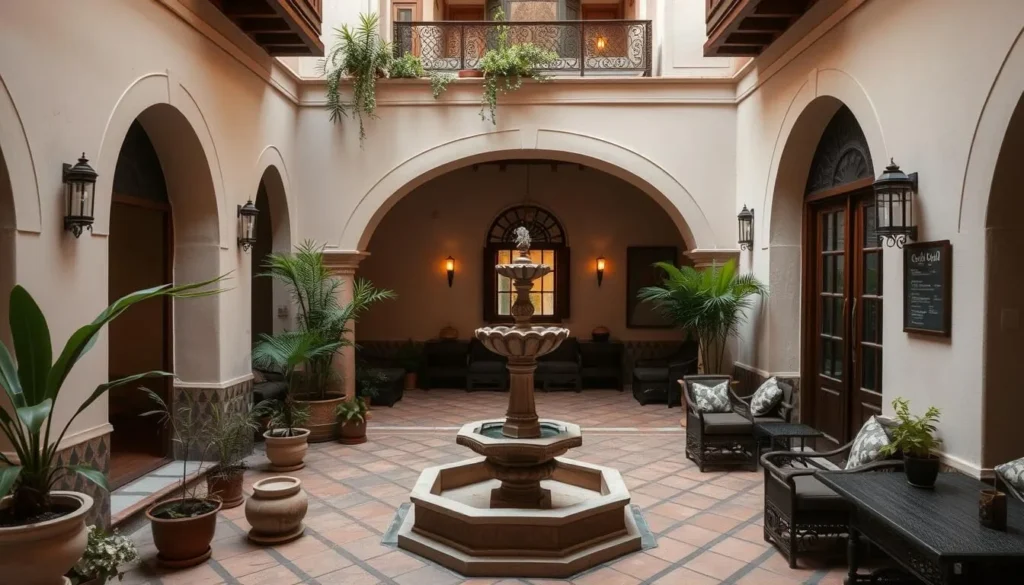
Dining & Local Cuisine
Syrian cuisine is renowned for its rich flavors and diverse influences. While dining options in Palmyra itself are limited, you’ll find excellent food in the cities where you’ll likely be based:
Traditional Dishes to Try
- Kibbeh – Bulgur shells stuffed with spiced minced meat and nuts
- Meze – Assortment of small dishes including hummus, baba ghanoush, and tabbouleh
- Shawarma – Thinly sliced meat wrapped in flatbread with vegetables
- Mansaf – Lamb cooked in fermented dried yogurt served with rice
- Fattoush – Levantine salad with toasted pieces of flatbread
- Muhammara – Hot pepper dip with ground walnuts and breadcrumbs
- Baklava – Sweet pastry made of layers of filo filled with chopped nuts
- Arabic Coffee – Strong coffee often flavored with cardamom
During day trips to Palmyra, tour operators often arrange lunch at local establishments or traditional Bedouin-style tents. These experiences offer authentic cuisine in a unique setting against the backdrop of the desert landscape.

Attractions, Sightseeing & Activities
Despite damage during recent conflicts, Palmyra still offers remarkable historical treasures. Here are the top attractions and activities to experience:
1. The Temple of Bel
Once the spiritual center of Palmyra, the Temple of Bel was built around 32 AD and dedicated to the Mesopotamian god Bel. While the main structure was severely damaged in 2015, parts of the exterior walls and entrance gate remain standing. Restoration efforts are ongoing, making this a poignant reminder of both ancient glory and recent tragedy.
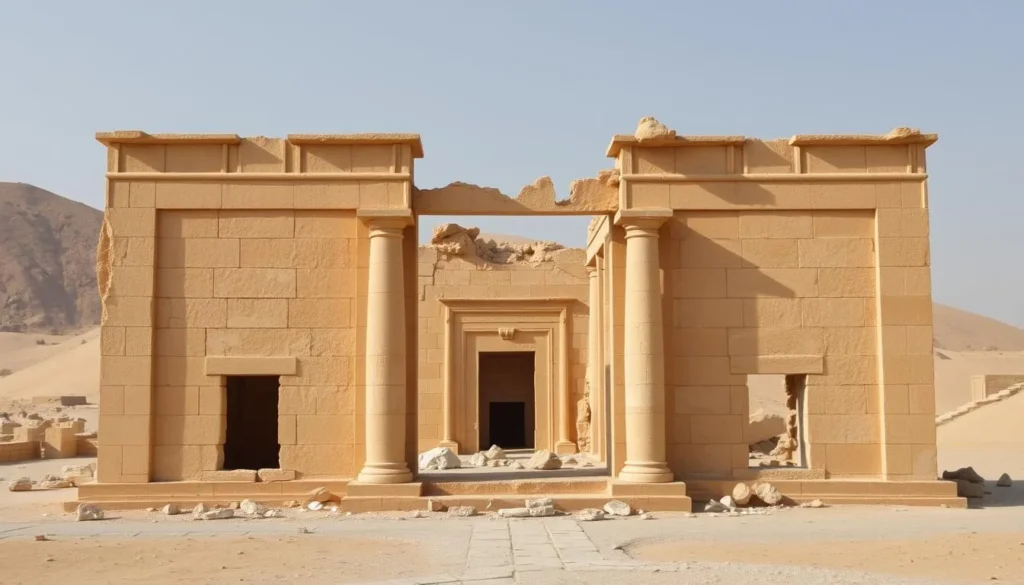
2. The Great Colonnade
This impressive 1.1 km long main street was once lined with shops, temples, and residences. Many of the 9-meter tall limestone columns still stand, creating one of the most photogenic vistas in Palmyra. Walking along this ancient thoroughfare offers a glimpse into the city’s former grandeur as a bustling commercial hub.
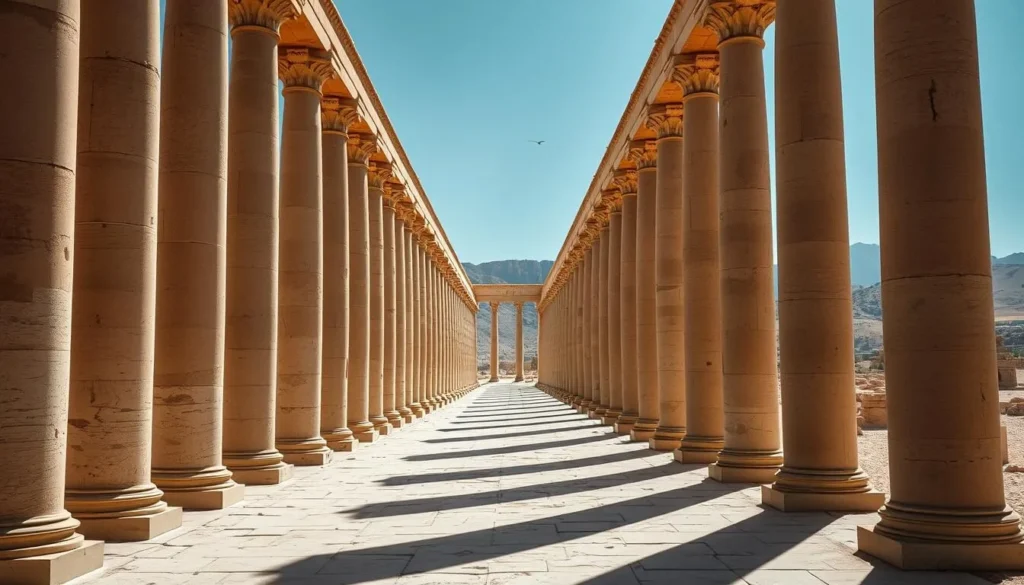
3. The Roman Theatre
This well-preserved semi-circular structure could once accommodate around 4,000 spectators. Dating from the 2nd century CE, the theatre features three horizontal seating sections and impressive acoustics. While it has a complex recent history, it remains an architectural marvel worth visiting.
4. The Hypogeum of Three Brothers
This underground burial chamber from the 2nd century CE is named after the three brothers who commissioned it. Though some of its original features have been damaged, the structure itself provides insight into Palmyrene funerary practices and architecture.
5. Palmyra Museum
While much of the museum was damaged during conflict, it’s undergoing reconstruction. The museum tells the story of Palmyra’s history and displays salvaged artifacts. The story of its former director, Khaled al-Asaad, who was executed by ISIS for refusing to reveal the location of hidden treasures, is particularly moving.

6. The Eqfa Spring and Oasis
This natural spring offers a refreshing contrast to the surrounding desert landscape. The crystal-clear water and surrounding palm trees provide insight into why this location was settled in the first place. Some locals believe the spring has healing properties.
Experience Palmyra with Expert Guides
Discover the ancient wonders of Palmyra with knowledgeable local guides who can bring history to life
Cultural Insights & Experiences
Beyond the physical ruins, Palmyra offers rich cultural experiences that connect visitors to both ancient history and contemporary Syrian life:
Queen Zenobia’s Legacy
Learn about the legendary Queen Zenobia who ruled Palmyra in the 3rd century CE. Often compared to Cleopatra, she led a significant military expansion that stretched from modern-day Iraq to Egypt before being captured by the Romans. Her story symbolizes Palmyra’s brief period of independence and power.

Local Resilience
Engage with local Syrians who have persevered through difficult times. Many residents have powerful stories to share about protecting cultural heritage and rebuilding their communities. These interactions often become the most meaningful memories for travelers to the region.
Traditional Experiences
Before the conflict, visitors could enjoy Bedouin-style desert camps, camel races in autumn, and sunset views from the Palmyra Castle. While availability of these experiences varies now, tour operators can advise on current options for authentic cultural engagement.

Practical Travel Tips
Preparing for a visit to Palmyra requires attention to several practical considerations:
Safety & Security
Always travel with licensed operators who understand current conditions. The situation in Syria remains complex, so staying informed through your embassy and tour operator is essential. Special permits are required to visit Palmyra, which must be arranged in advance.
Cultural Respect
Dress modestly, particularly at religious sites. Women should consider covering shoulders and knees. Ask permission before photographing locals. Learning a few Arabic phrases like “shukran” (thank you) is appreciated. Avoid political discussions unless initiated by locals.
Practical Essentials
Bring cash (Syrian pounds or US dollars) as ATMs are unreliable. Pack sun protection, comfortable walking shoes, and plenty of water. Consider bringing small gifts from your home country for guides or locals you connect with.
Need Transportation in Syria?
Arrange your own vehicle for more flexibility in exploring the region
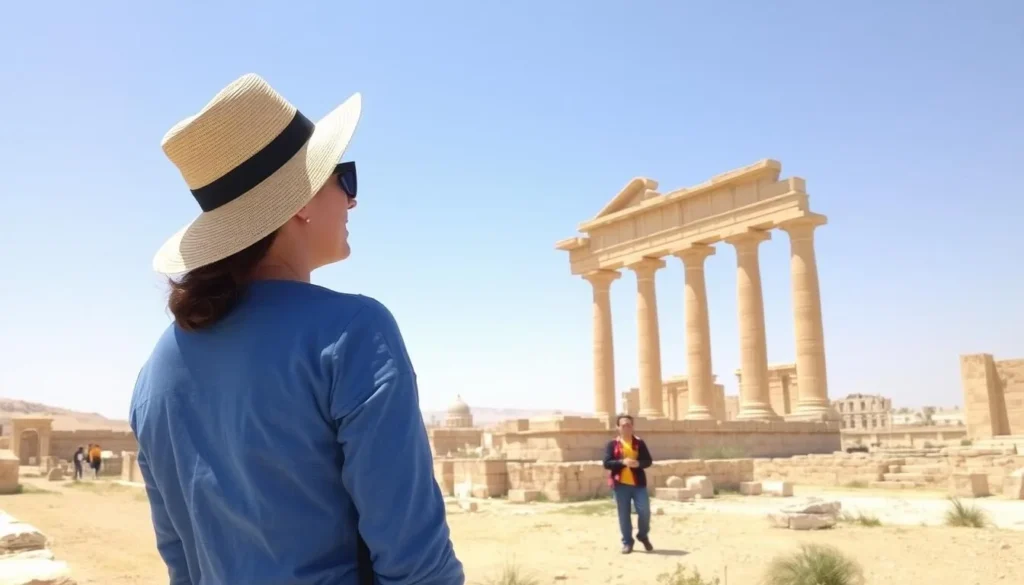
Embracing Palmyra’s Timeless Wonder
Visiting Palmyra is more than just a sightseeing experience—it’s a journey through layers of human history and resilience. Despite the challenges it has faced, this ancient desert city continues to inspire awe with its monumental architecture and cultural significance. As restoration efforts continue, travelers have a unique opportunity to witness both the enduring legacy of an ancient civilization and the determination of modern Syrians to preserve their heritage.
Whether you’re captivated by archaeological wonders, drawn to complex history, or seeking to understand a culture at a crossroads of civilizations, Palmyra offers an unforgettable experience that will stay with you long after you’ve left its ancient streets behind. As you plan your journey to this remarkable UNESCO World Heritage site, you’ll be joining the countless travelers across millennia who have been transformed by their encounter with the “Venice of the Sands.”
The above is subject to change.
Check back often to TRAVEL.COM for the latest travel tips and deals.



